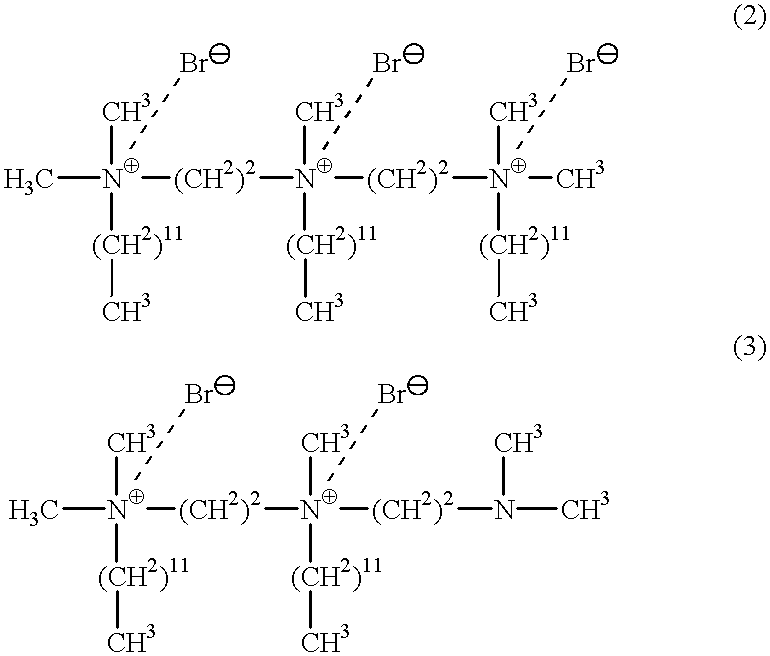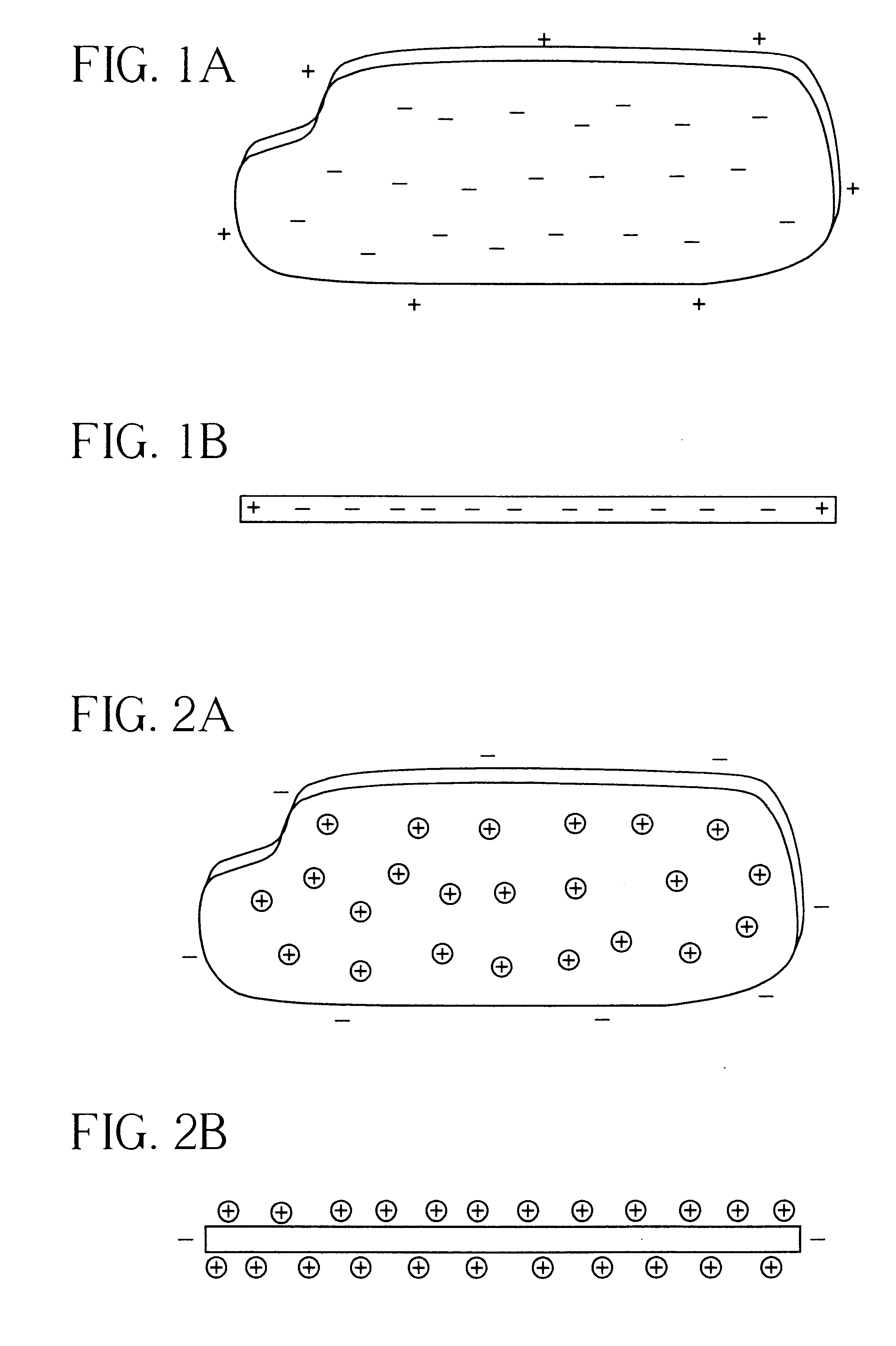Compatibilizer for immiscible polymer blends
a polymer blend and compatibilizer technology, applied in the field of polymer blends, can solve the problems of heterogeneous mixtures that do not exhibit enhanced properties, components tend to phase-separate, and blends that are heterogeneous on a macroscopic level would therefore be considered incompatible, and achieve the effect of greater versatility
- Summary
- Abstract
- Description
- Claims
- Application Information
AI Technical Summary
Benefits of technology
Problems solved by technology
Method used
Image
Examples
example 2
Commercially available ORGANOTROL.TM. clay (a di-methyl, di-tallow ammonium functionalized montmorillonite clay) was dissolved in toluene together with monodisperse, narrow molecular weight distribution polystyrene ("PS") and polymethylmethacrylate ("PMMA") homopolymers of molecular weights 90,000 and 27,000 respectively. PS and PMMA are highly incompatible polymers, especially for high molecular weight chains. A control sample without clay and having the identical PS / PMMA composition was also prepared. The solutions were spin cast at 25,000 RPM on silicon wafers to produce films varying from 100 to 150 nm in thickness. The thickness was controlled by adjusting the viscosity of the solution. The thickness of a particular sample was measured after spin casting using variable angle ellipsometry. Some samples were then annealed in vacuum for 24 hours at 170.degree. C., which is well above the glass transition of both polymers, Tg=100.degree. C.
The morphologies of the films were then st...
example 3
Monodisperse Polystyrene (PS) having a molecular weight of 90,000 and polymethylmethacrylate (PMMA) having a molecular weight of 27,000 were blended together and formed into annealed (at 165.degree. C. for 24 hours) and unannealed films on a silicon (Si.sub.3 N.sub.4) window without adding clay to the blend. FIGS. 6a-6f are composition maps showing the position of the PMMA (FIGS. 6a and 6b) and PS (FIGS. 6c and 6d) in the films. The figures labeled TOTAL (FIGS. 6e and 6f) are carbon density maps which are proportional to the flatness of the film. The films that are shown in FIGS. 6a, 6c and 6e were not annealed and the films that are shown in FIGS. 6b, 6d and 6f were annealed. In the absence of clay, the films are rough and large segregated domains are visible in FIGS. 6e and 6f. The segregated domains are the incompatible PS and PMMA polymers. FIGS. 6a, 6c and 6e show that the polymers in the film are slightly segregated before the films were annealed. After annealing, FIG. 6b show...
example 4
In this example, the same composition of polymers as used in Example 3 was mixed with 20% by weight Organotrol.TM. clay and formed into a film on a silicon (Si.sub.3 N.sub.4) window. The film was not annealed before STXM was used to analyze the film structure. FIGS. 7a-7c are optical density maps that show the results. The lighter areas in the map are more highly absorbing than the darker areas. The PMMA and PS composition maps (FIGS. 7a and 7b, respectively) show that the PMMA and PS domains are very small and interconnected. The interconnectivity gives the film superior mechanical properties. The TOTAL scan in FIG. 7c shows that the film is much flatter than the films that did not include clay.
PUM
| Property | Measurement | Unit |
|---|---|---|
| Thickness | aaaaa | aaaaa |
| Thickness | aaaaa | aaaaa |
| Temperature | aaaaa | aaaaa |
Abstract
Description
Claims
Application Information
 Login to View More
Login to View More - R&D
- Intellectual Property
- Life Sciences
- Materials
- Tech Scout
- Unparalleled Data Quality
- Higher Quality Content
- 60% Fewer Hallucinations
Browse by: Latest US Patents, China's latest patents, Technical Efficacy Thesaurus, Application Domain, Technology Topic, Popular Technical Reports.
© 2025 PatSnap. All rights reserved.Legal|Privacy policy|Modern Slavery Act Transparency Statement|Sitemap|About US| Contact US: help@patsnap.com



